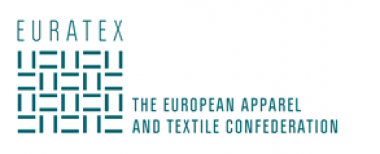BVMed begrüßt Scholz/Macron-Initiative
Der Bundesverband Medizintechnologie (BVMed) hat die Initiative von Bundeskanzler Olaf Scholz und Präsident Emmanuel Macron begrüßt, den EU-Haushalt neu auszurichten und „mehr für die Wettbewerbsfähigkeit ihrer Industrie“ zu tun. Dafür soll Bürokratie ab- und Schlüsseltechnologien ausgebaut werden. „Die MedTech-Branche ist in Europa eine Schlüsseltechnologie der Zukunft, die auch noch entscheidend für die Gesundheit und Lebensqualität der Menschen ist. Wir können gerade hier die Chancen noch besser nutzen, bessere Anreize für Innovationen setzen und unnötige Bürokratie abbauen. Wir müssen mit einem ‚Industrial Deal‘ einen besseren Interessensausgleich mit wirtschaftspolitischen Belangen erreichen und Europa wieder wettbewerbsfähiger machen“, kommentiert BVMed-Geschäftsführer und Vorstandsmitglied Dr. Marc-Pierre Möll.
- Der europäische Markt für Medizintechnik beträgt insgesamt rund 160 Milliarden Euro. Das sind über ein Viertel des Weltmarkts. Europa ist damit nach den USA der zweitgrößte MedTech-Markt der Welt.
- Die 35.000 europäischen MedTech-Unternehmen investieren viel in die Verbesserung und Entwicklung bahnbrechender Technologien zum Wohle der Patienten und beschäftigen 865.000 Menschen in Europa.
- 92 Prozent der Unternehmen sind kleine und mittelständische Betriebe (KMU).
Insbesondere hilft die Medizintechnik den Patient:innen und unterstützt die Angehörigen der Gesundheitsberufe mit innovativen Lösungen. Sie sorgt dafür, dass immer mehr Menschen besser und gesünder länger leben.
„Aber: Europa verliert bei dieser wichtigen Schlüsselindustrie durch die überbürokratische und nicht praxistaugliche europäische Medizinprodukte-Verordnung, kurz MDR, den Anschluss“, warnt Möll. Unternehmen bevorzugen mittlerweile die Markteinführung von Innovationen in den USA.
- Nach einer Analyse der Boston Consulting Group (BCG) priorisieren mittlerweile 89 Prozent der Unternehmen eine FDA-Zulassung.
- Auch die BVMed-Herbstumfrage 2023 zeigt: Die Zeiten, in denen das europäische Regulierungssystem für Medizinprodukte dem US-amerikanischen FDA-System überlegen war, sind lange vorbei. 53 Prozent der BVMed-Mitgliedsunternehmen präferieren das FDA-System, nur 12 Prozent das MDR-System der EU. 35 Prozent haben keine Präferenz.
In seinem MDR-Whitepaper fordert der BVMed daher unter anderem die Abschaffung der fünfjährigen Re-Zertifizierungs-Pflicht, die Einführung eines Fast-Track-Verfahrens für innovative Produkte, Orphan Devices und Nischenprodukte, die Steigerung der Effizienz, der Transparenz und der Berechenbarkeit des MDR-Systems sowie die Zusammenführung der Verantwortung im System über eine zu schaffende Governance-Struktur.
Der BVMed fordert in seinem Positionspapier zur Europawahl am 9. Juni 2024 zudem einen eigenen Gesundheitsausschuss im Europäischen Parlament, um den gestiegenen Stellenwert der Gesundheitsthemen abzubilden. Unter dem Titel „Medizintechnik-Standort Europa stärken“ ist es für den deutschen Medizintechnik-Verband besonders wichtig, die Resilienz des Gesundheitssystems zu stärken und damit die medizinische Versorgung krisenfest zu gestalten.
BVMed | Bundesverband Medizintechnologie e.V.







